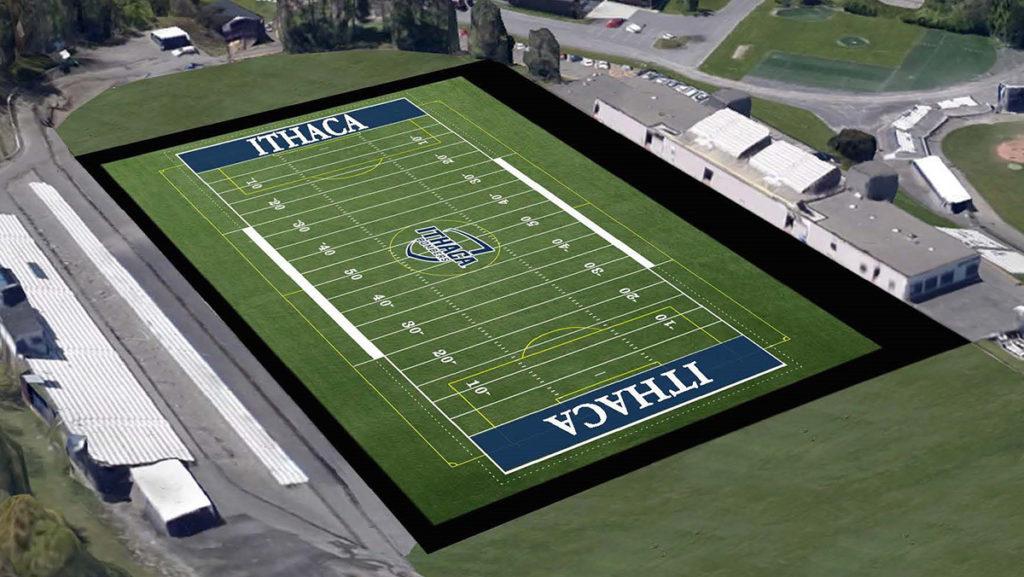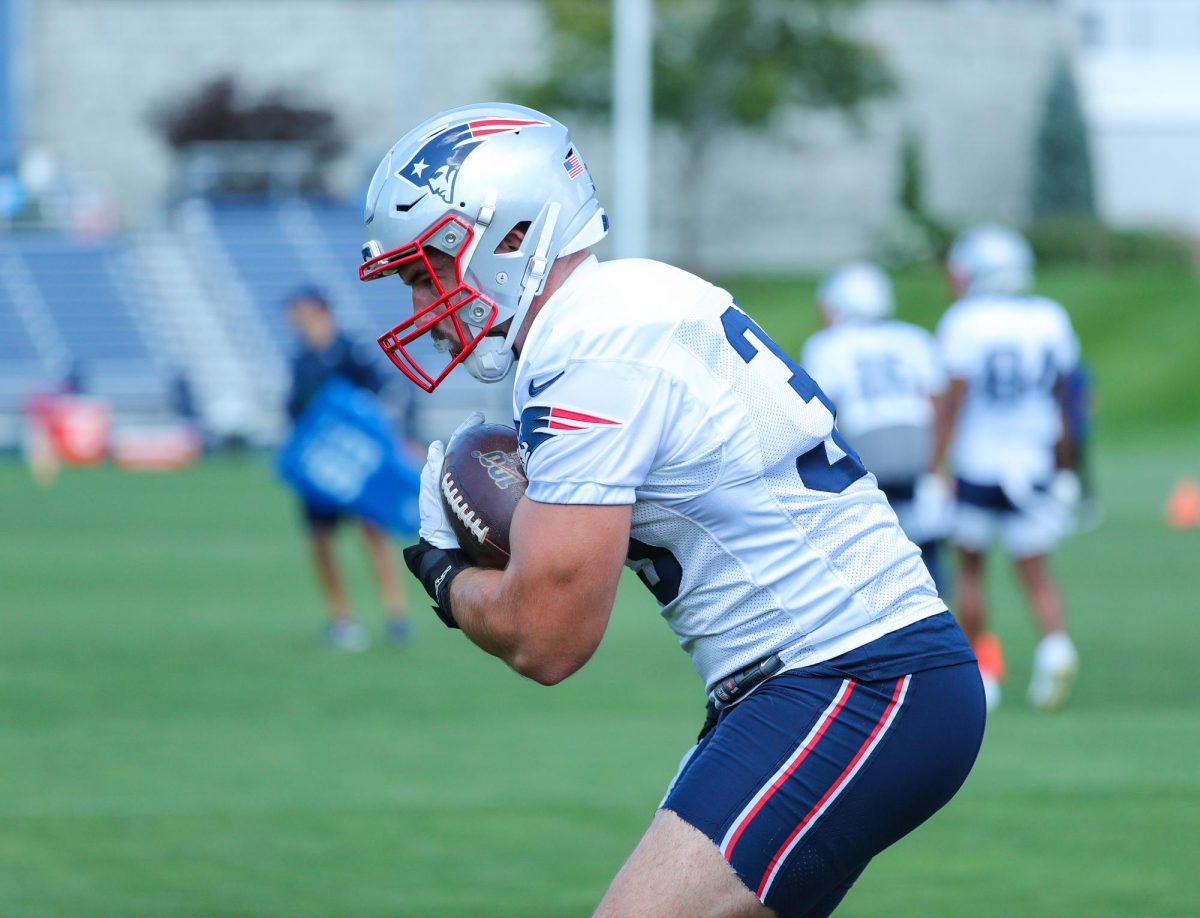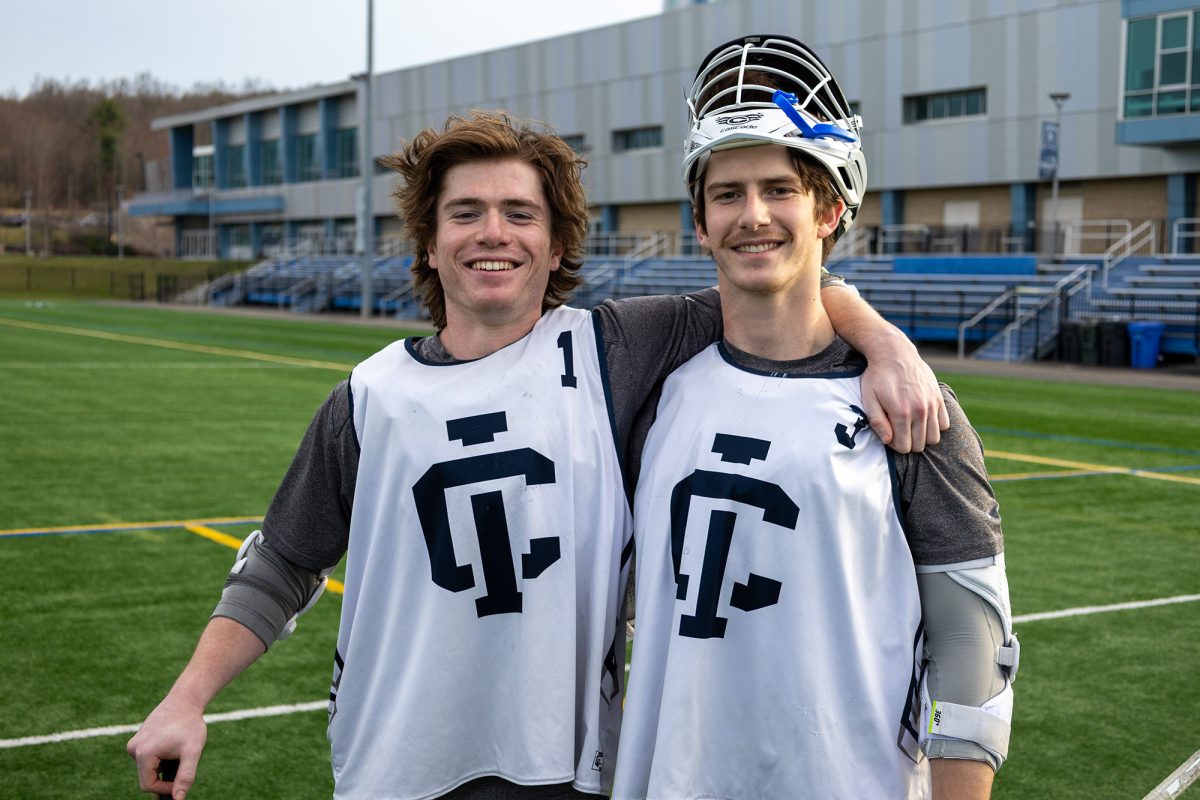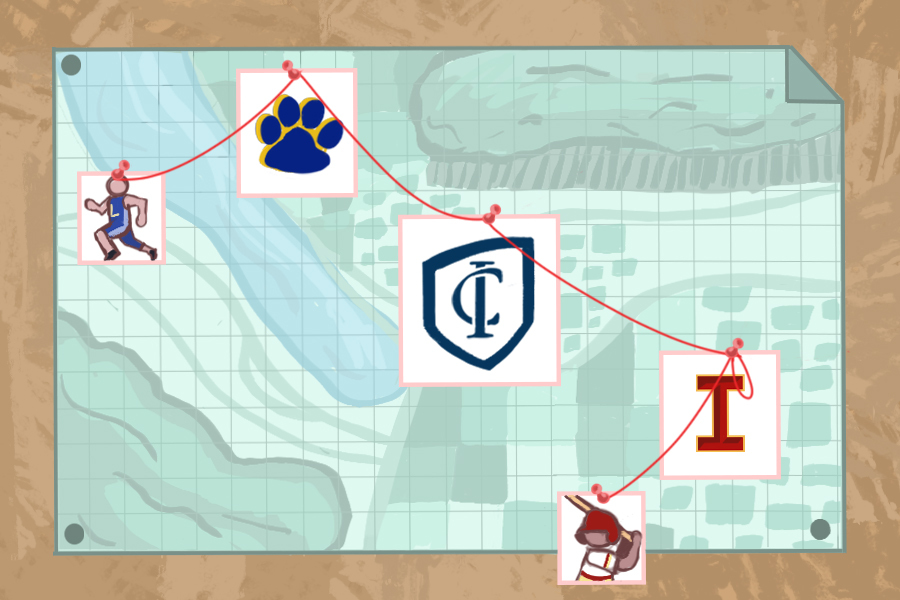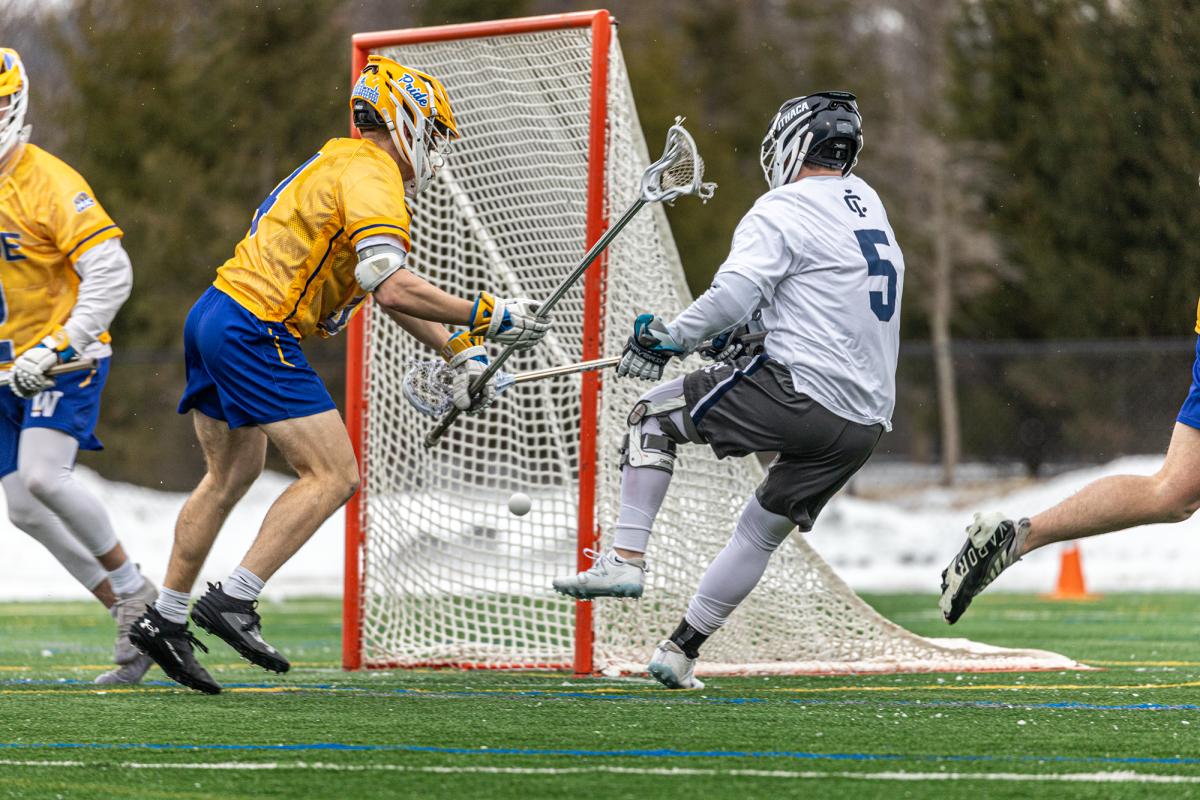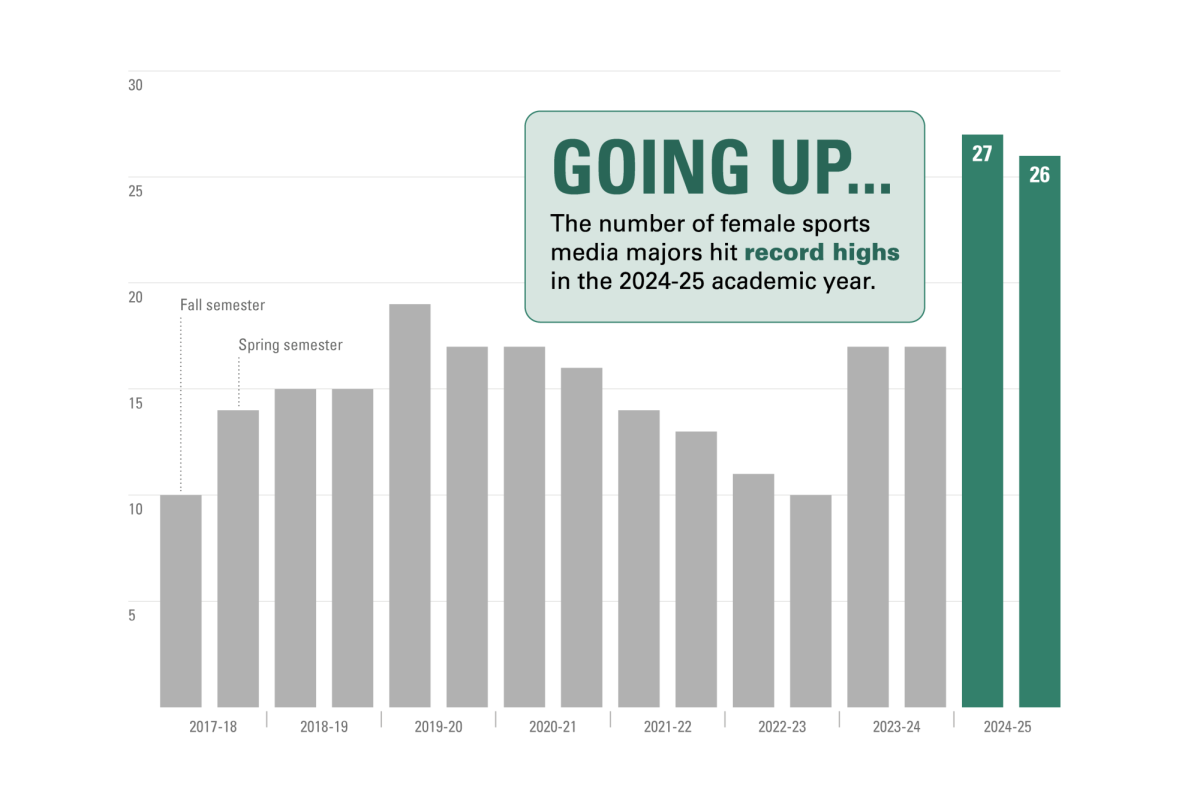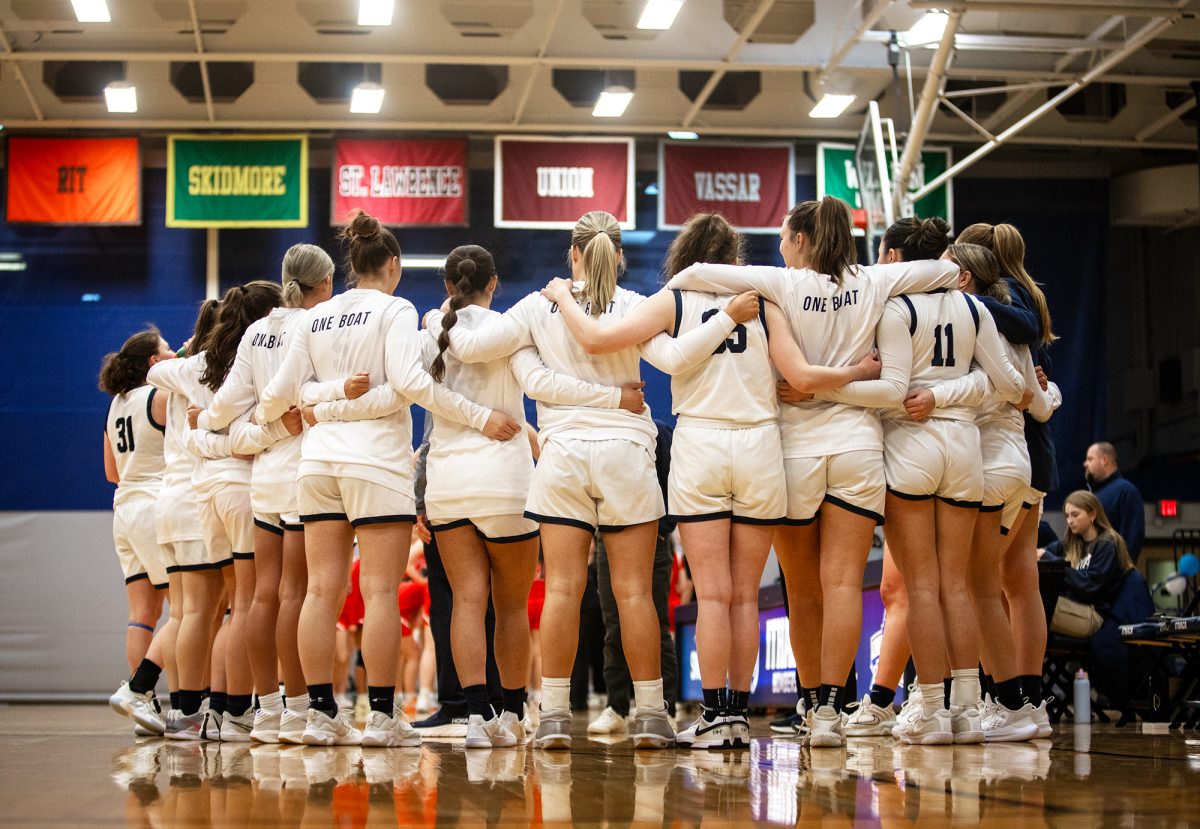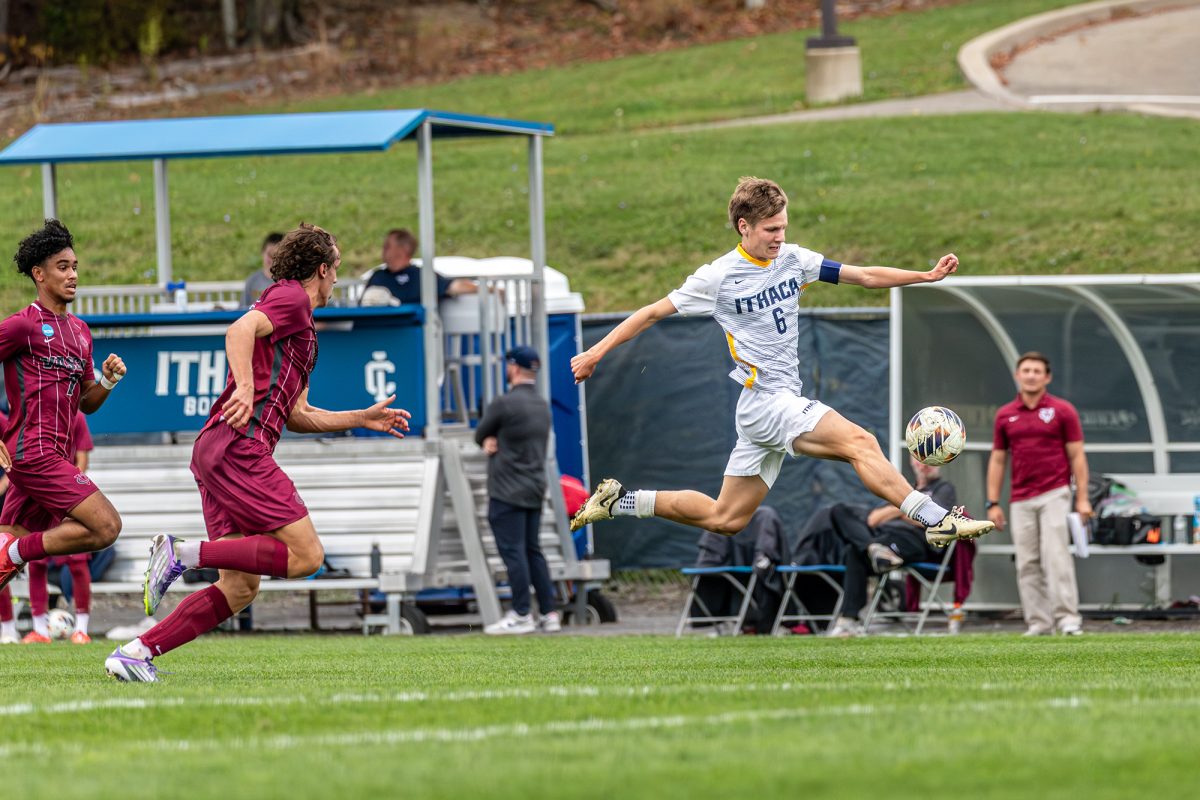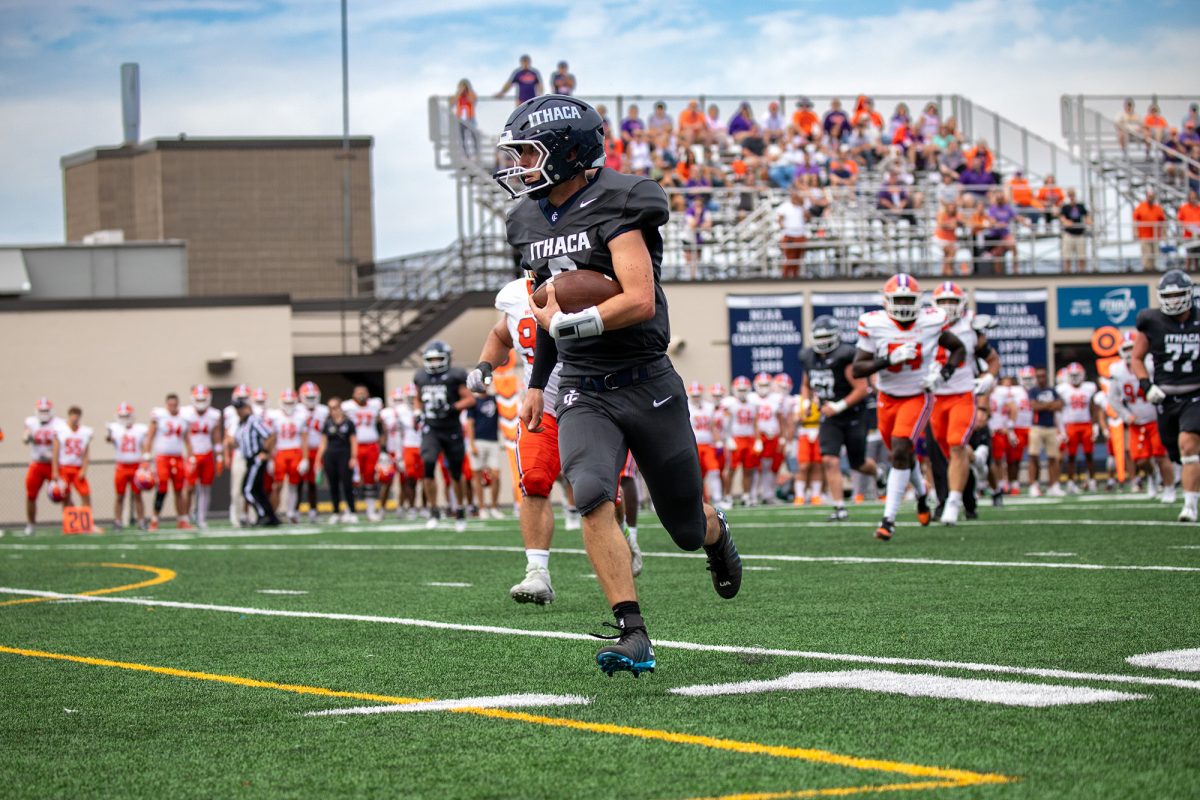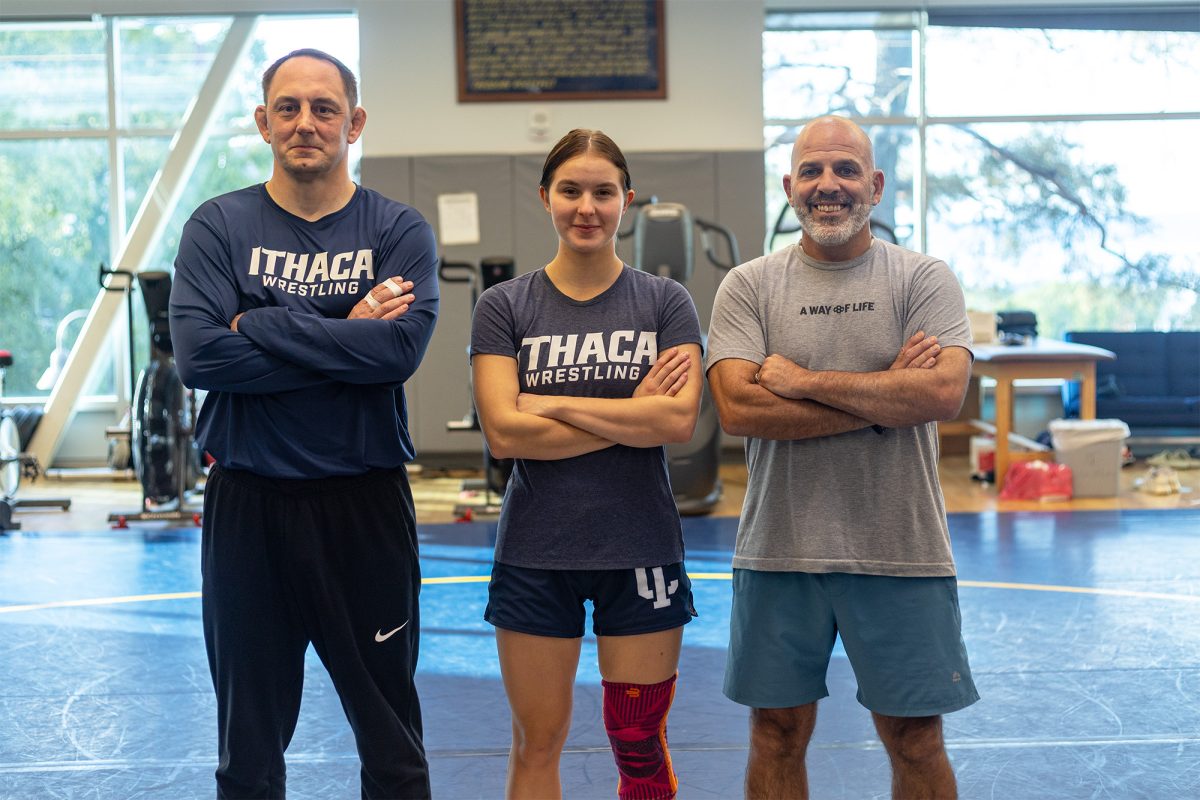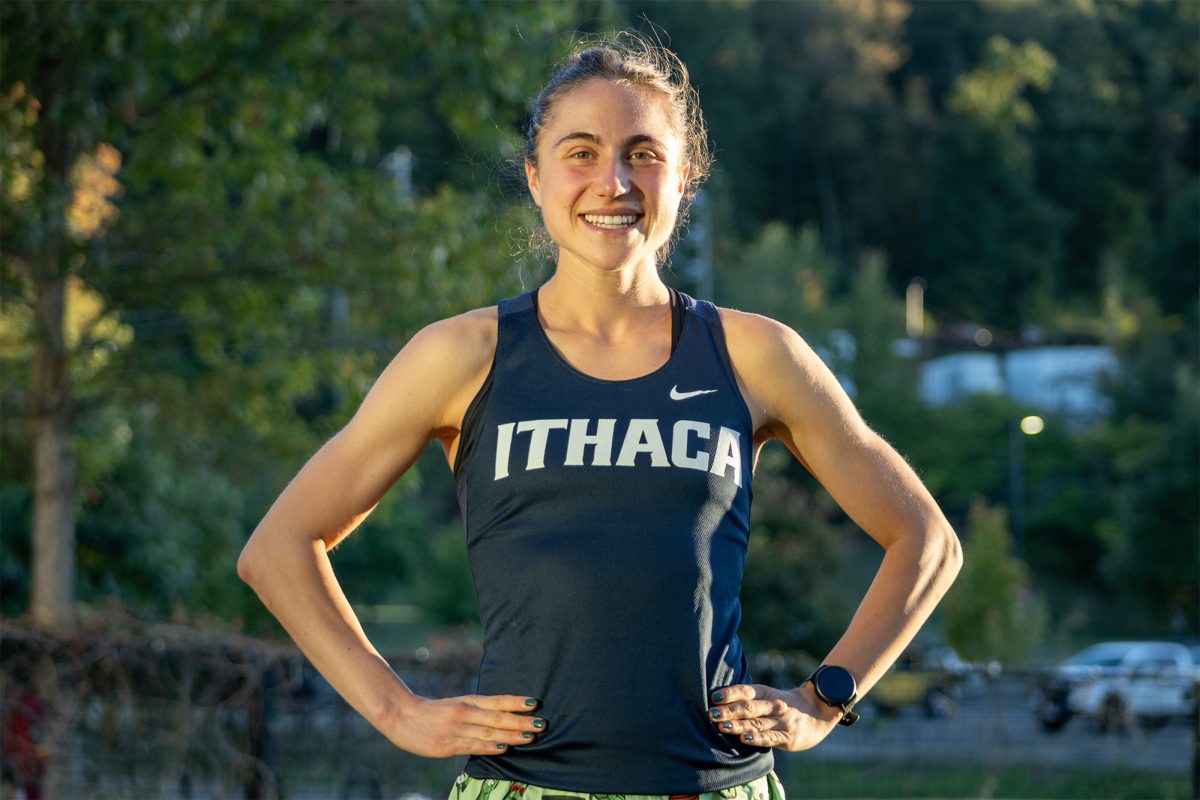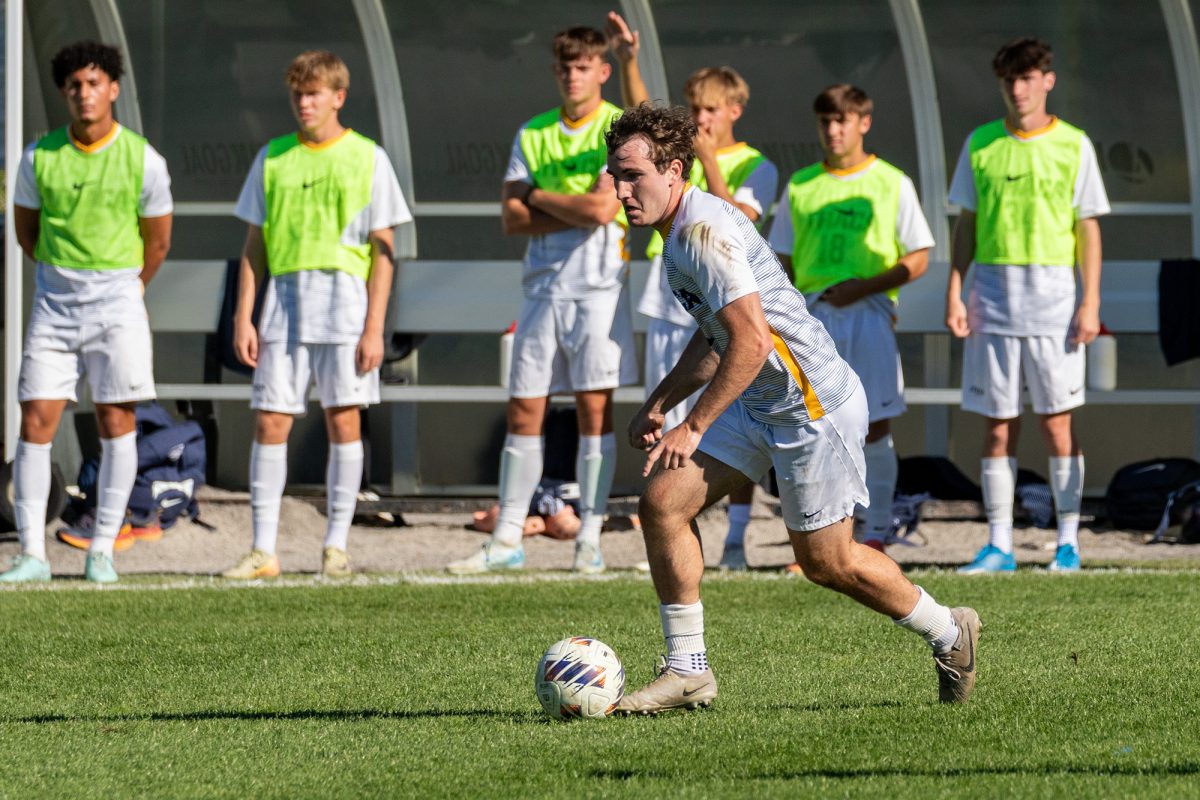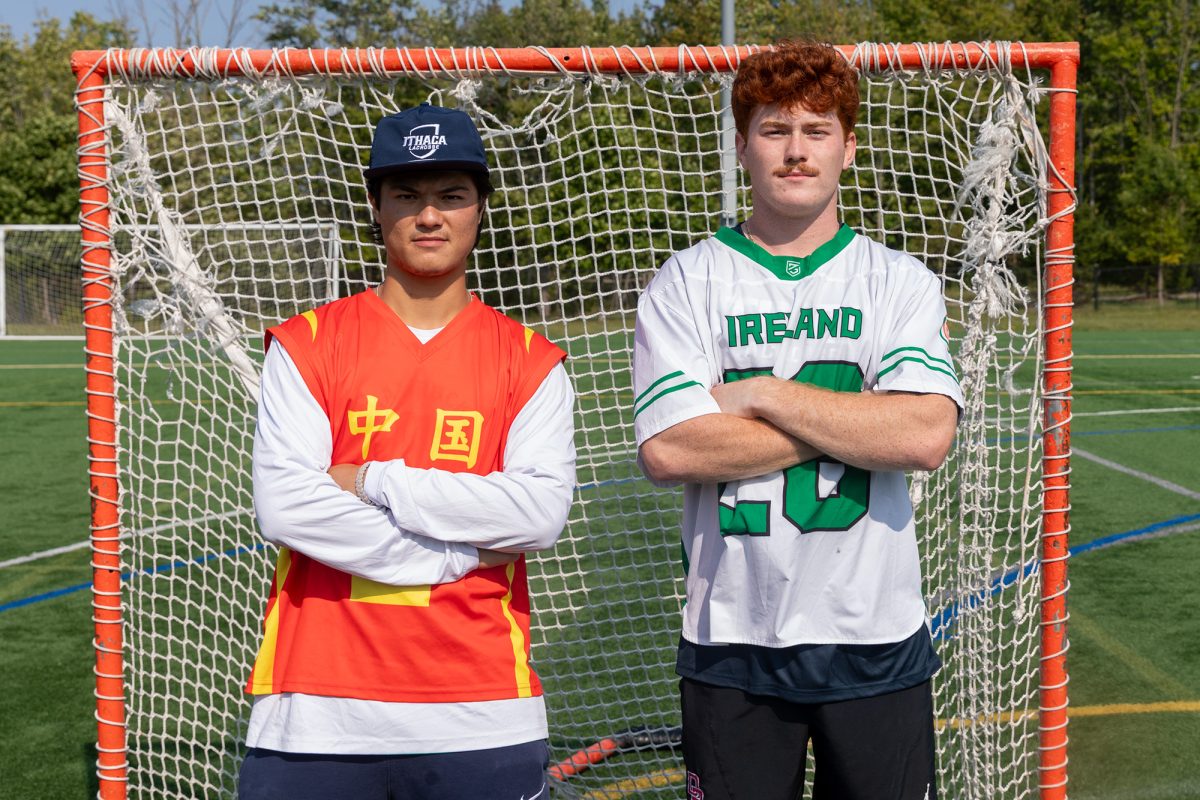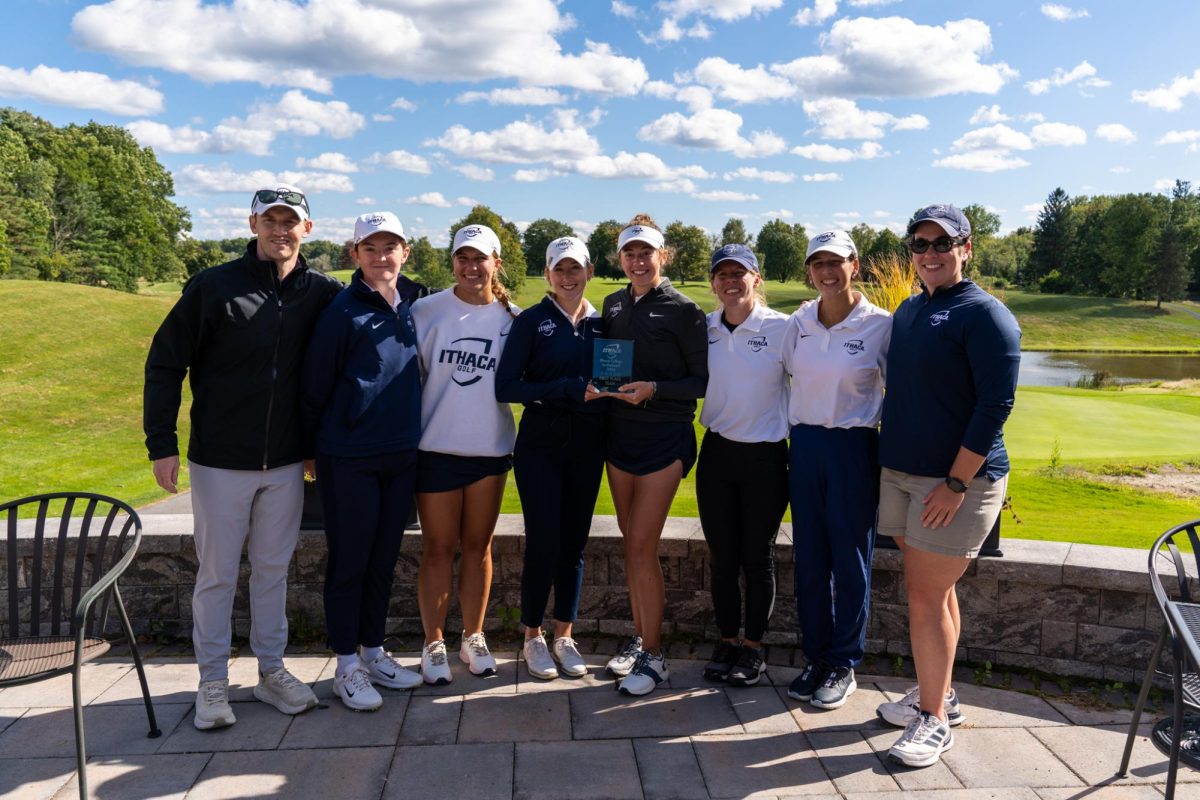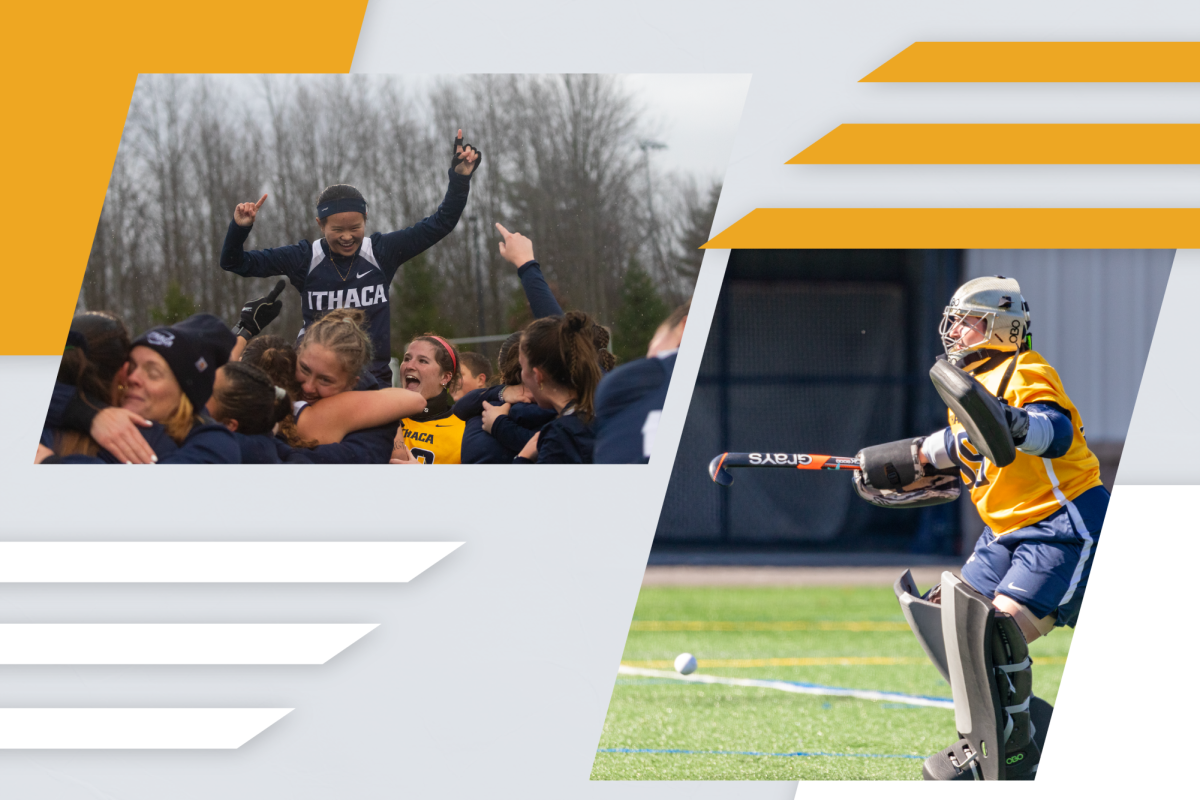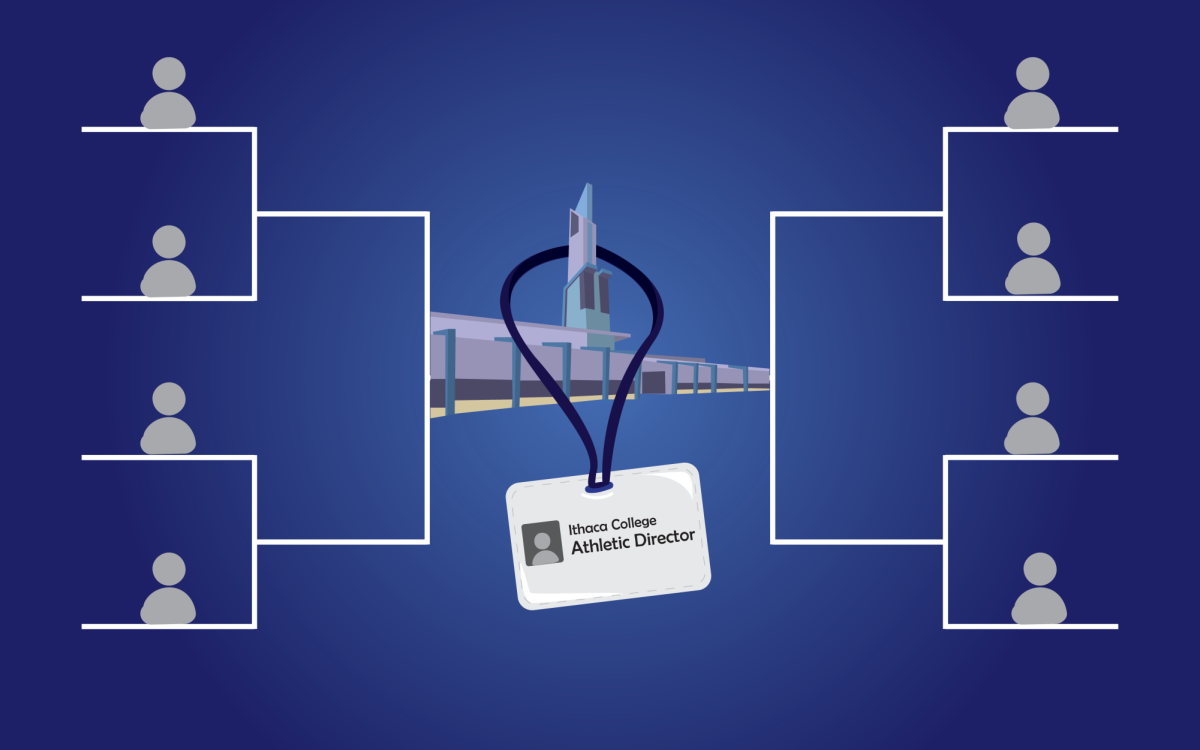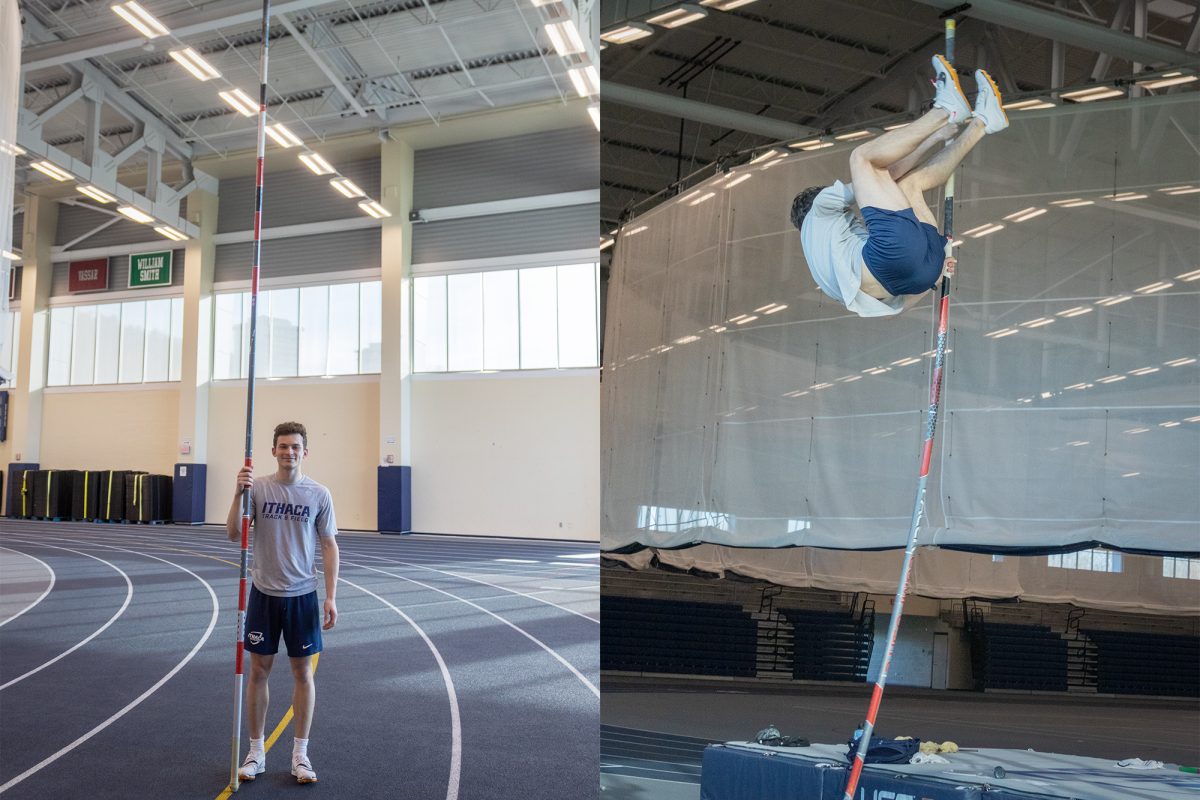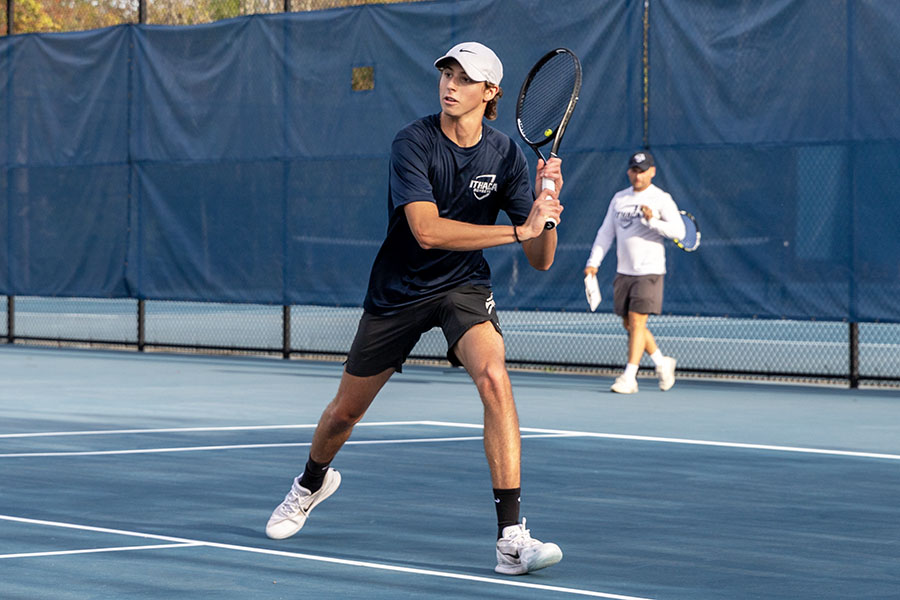This article is the second part of a two-part series on the installation of an artificial turf field at Bertino Field at Butterfield Stadium and its impacts on the campus community. The first part was published in the last edition of The Ithacan on Feb. 9.
While Ithaca College has positioned planned renovations to Butterfield Stadium as an opportunity for the field to be used for more of the year and by more teams, the artificial surface being used may increase the risk for injuries among athletes.
On Nov. 29, the college announced that Monica Bertino Wooden ’81 had donated $3 million for the natural grass at Butterfield Stadium, the home of the football team, to be replaced with artificial turf. Bertino Wooden’s brother, John Bertino ’80, was part of the 1979 National Championship football team.
The college has said that it prioritizes the health and safety of all its athletes. But along with environmental questions, sources that The Ithacan spoke to raised concerns about injuries, logistics and equity with the new surface.
Concerns about injuries
On Nov. 12, J.C. Tretter, the president of the National Football League Players Association, called for the removal and ban of all slit film turf.
Slit film turf is a type of artificial turf used at six of the 14 NFL stadiums that do not have natural grass. In his statement, Tretter cited “statistically higher in-game injury rates” for slit film compared to other types of turf or natural grass. Chris White ’07 is the marketing manager of Chenango Contracting, the company building the turf at the college. He said the surface will have a hybrid filament, including slit film and monofilament blades.
However, whether or not artificial turf causes more injuries than natural grass is up for debate. According to ESPN, data compiled for the NFL and NFLPA showed that injury rates on non-contact injuries on the lower body are statistically the same on artificial turf and natural grass.
Chris Colloca ’90, who has a doctorate in kinesiology, wrote to the Ithaca College Board of Trustees in December when the plan was originally announced opposing the turf field. Colloca said part of his reasoning is because of potential concerns for injuries caused by turf.
“This study says that and that study says this,” Colloca said. “But when we look at all of the evidence, we begin to get a trend, we begin to see the truth. What we know right now … when we look at the systematic reviews that I’ve cited [in the letter], we know that there’s an increased risk of lower extremity injuries. So that’s a concern to me.”
One article that Colloca cited, which was published in the American Journal of Sports Medicine in 2019, found that in Divisions II and III, athletes experienced ACL injuries on artificial turf at 1.63 times the rate of natural grass. For posterior cruciate ligament injuries, the rate was even higher — 3.13 times the rate on turf than grass.
Susan Bassett ’79, associate vice president and director of Intercollegiate Athletics, said the college read studies, looked at data and consulted with the athletic training staff at the college when considering the safety of artificial turf. Bassett said there are factors that go into the safety of turf like age, and that some studies, like the one Colloca cited, may be out of date.
“The reality with the studies on lower-leg injuries on synthetic surface is that there are a lot of variables,” Bassett said. “Every year, the technology and the way they construct synthetic surface improves.”
Tom Heinzelman ’75, a member of the Athletics Advisory Council at the college and a former high school football coach, said he does not think artificial turf would be so popular if it truly were a serious risk to athletes.
“They’re not going to put multi-million dollar athletes on unsafe surfaces,” Heinzelman said. “And I don’t know if you can quantify the fact that there are more injuries on that particular surface … because the majority of facilities have synthetic turf, and they get the maximum amount of opportunity for play.”
In addition, Bassett said inclement weather can cause Butterfield Stadium to be unusable for practices, forcing the football team to practice at Higgins Stadium, the turf field behind the Athletics & Events Center.
Head athletic trainer Michael Matheny echoed Bassett, saying that it is more beneficial for the team to practice and play on turf considering that the large majority of its away games occur on the same surface.
“This is kind of anecdotal, but where our kids feel like they get sore and have injury stuff that they have to manage during the week is when they’re going back and forth,” Matheny said. “I don’t want people to get the impression that player safety wasn’t a part of that discussion. … There are other advantages, though.”
Additionally, scientists that The Ithacan spoke to in its previous reporting on the environmental harms of artificial turf said artificial turf, unlike a natural grass field, is a cleanliness hazard.
Sarah-Jeanne Royer is an oceanographer whose work has looked at how artificial turf harms the environment and endangers athletes. Royer said that since artificial turf does not have the ability to absorb water or bacteria, it can trap bacteria and diseases that are shed from an athlete while using the field.
“It takes water to keep [grass] healthy,” Royer said. “The amount of sweat that gets gathered into the synthetic turf — and the blood and all of the germs — is crazy. That [stuff] doesn’t get drained through the grass and then the soil. It’s sick.”
Kyla Bennett is the director of Public Employees for Environmental Responsibility and a former wetlands enforcement coordinator for the Environmental Protection Agency. Bennett has frequently called for bans on artificial turf, citing that it exposes athletes to cancer-causing chemicals.
Bennett said the artificial turf industry frequently misleads customers and athletes on injury rates as a result of artificial turf.
“It is not safe for players,” Bennett said. “It’s just a myth that this stuff is safer, that it’s less injuries that it’s better to play on. Professional players hate it.”
Concerns about logistics and equity
Currently, Butterfield Stadium has a six-lane track surrounding the football field. However, according to Bassett and men’s track and field head coach Jim Nichols, that track has not been usable for competition or practice in several years and has not been resurfaced since 1997, according to the athletics website.
Although the track and field teams can practice indoors at Glazer Arena, Nichols said the team has to travel to Cornell University in order to practice at an outdoor facility.
“We’re very fortunate that we have a beautiful, state-of-the-art indoor track and field complex that we’re able to utilize during the outdoor season for practices [in certain events],” Nichols said. “But there are definitely events that we’re not going to be able to do outdoors … so we’re going to have to venture over to Cornell once or twice a week, or maybe to Ithaca High [School] once or twice a week to practice those events.”
However, Nichols emphasized that he would rather have a dedicated outdoor track and field facility than have it lumped in with the football stadium. Nichols said part of the reason the current track is unusable is because it gets driven over by trucks delivering things to the Cerrache Center or setting up events at the stadium.
Nichols added that before the A&E Center was built in 2011, both the indoor and outdoor teams had to travel to Cornell for most practices. But Katelyn Hutchison ’22, a former runner who transferred to the University of Kentucky for track and field following her senior season, feels that the move is disrespectful, considering the prestige of the women’s program.
“My problem with this entire situation is … [there are] no plans officially for what track is going to look like,” Hutchison said via voice note. “Why don’t we also deserve to have a new track? Why don’t we deserve to have concrete plans surrounding a team that has proven [itself] immensely over the last few years?”
In the initial statement, the college announced that a fundraising campaign would be implemented to raise the money necessary for a full-time outdoor track and field facility. A member of the women’s track and field team, who wished to remain anonymous to avoid retaliation from coaches and administration, told The Ithacan that she does not understand why the track and field teams have to continue to find other ways to practice for the outdoor season.
“The fact that we would be out a track for who knows how many years until we get a donation is just not fair,” the anonymous source said.
Marc Hudak ’90, a former football player and one of the promoters of the Cortaca Jug games at MetLife and Yankee Stadium, said he thinks the lack of a plan for a new track is because of Bassett’s desire to renovate the football stadium.
“I sort of feel like [Bassett] wants to leave a legacy project before she walks out the door, and I think that’s partially what’s driving this,” Hudak said.
The anonymous source also told The Ithacan she is worried that the vague plan to build a new track means it may never get built or will at least be pushed to the side.
“Without a timeline and without accountability, there’s nothing,” the anonymous source said. “They can say everything they want, but I really don’t think that means anything until [they say], ‘We’re going to be doing it on this given day.’”
Hudak said the beauty of Butterfield Stadium was what convinced him to transfer to Ithaca College before his sophomore season and is a large reason why he has donated so much money to the football program. But he thinks much of the decision to make the field artificial turf was made behind closed doors, and he said he thinks that was for a reason.
“I think this has been part of her plan for a long time,” Hudak said. “She’s had no involvement by the board of trustees. … This has been [Bassett] and a couple of other people on her staff.”
Bassett, however, refutes that. She said the decision has been in the making for several years and many people have been involved in the discussion, rather than having it be a secret or “conspiracy.”
“This has been worked on, planned, proposed and discussed since 2016,” Bassett said. “I am an employee of the institution and I work within a governance structure that guides all major decisions.”
The artificial turf surface means the facility would be able to be used year-round, not just by the football team, but by sports including soccer, lacrosse and field hockey. Sean Reilley, associate director of recreational sports, said it also opens the door for more utilization by club and intramural sports.
“It’s one of the most positive developments that’s happened in my time here for club sports,” Reilley said. “With having a second turf field on campus, the number of additional participation opportunities available [is] going to be very significant for us.”
No matter how they feel about the renovations, most of the opponents, including Hudak, Hutchison and Colloca, agreed that the gift of Bertino Wooden was generous and are thankful the college has the additional funds to spend. Hudak said he just thinks the money could be better spent and does not understand why the track has not been rebuilt yet, especially if the college knew it was not usable for competition.
“If you’re going to put a track down by Yavits Field, why don’t you put the turf inside that and call it the Bertino Sports Complex?” Hudak said. “How do you not have a track, especially when you’ve got one of the best track teams in the country?”
Staff writer Daniel King contributed reporting to this story.



